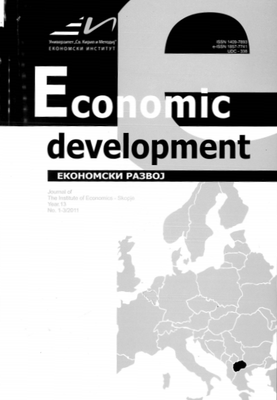Ricardo`s theory in practice:analysis of interregional trade in EU
Ricardo`s theory in practice:analysis of interregional trade in EU
Author(s): Tome NenovskiSubject(s): Economy
Published by: Економски институт - Скопје
Keywords: Ricardo effect; foreign trade; comparative advantages; prices equilibrium; free trade.
Summary/Abstract: In international trade, countries should use their relative comparative advantages. They should specialize in production and export of goods and services that compete with lower relative cost of production to other countries and to exchange those products to other products for which home manufacturing would be more expensive. That is the theory of David Ricardo, one of the founders of classical political economy. Although it is set back in 1817, today that theory forms the basis for explaining the benefits of international trade, i.e. the incentives and motives of national economies to trade with each other. At its core lies the model of perfect competition. This model is the basis for today's advocacy for free trade within the EU, trade with no tariffs and no other restrictions. The end result of the Ricardo model of comparative advantage leads to a gradual flattening of prices of products which are traded between economies based on comparative advantages. If there is free trade between foreign countries, it is clear that the products will move from areas with lower prices, to areas with higher prices. The realization of such a theory today is a plan within the EU. However, the practice opposes these fundamental values of Ricardo’s theory because: - The model of perfect competition, to which EU aspires, practically does not exist today because today in the EU market structures that restrict competition prevail; - The model does not explain how countries that trade with each other will establish a balance in the trading price; - The model does not explain how to overcome the problem of different tastes of consumers in different countries; - The model does not explain how to reduce transport costs as barriers to foreign trade. Eliminating such weaknesses will upgrade Ricardo’s theory and make it valid in current economic conditions. That way it could really be effective in realizing the vision of a “Europe without borders”.
Journal: Економски Развој - Economic Development
- Issue Year: 13/2011
- Issue No: 1-3
- Page Range: 35-52
- Page Count: 18
- Language: English

